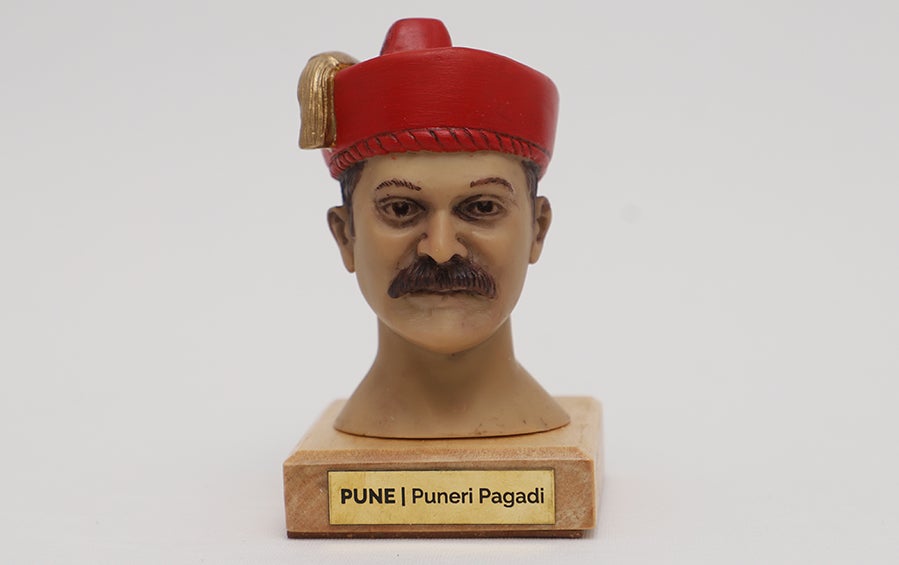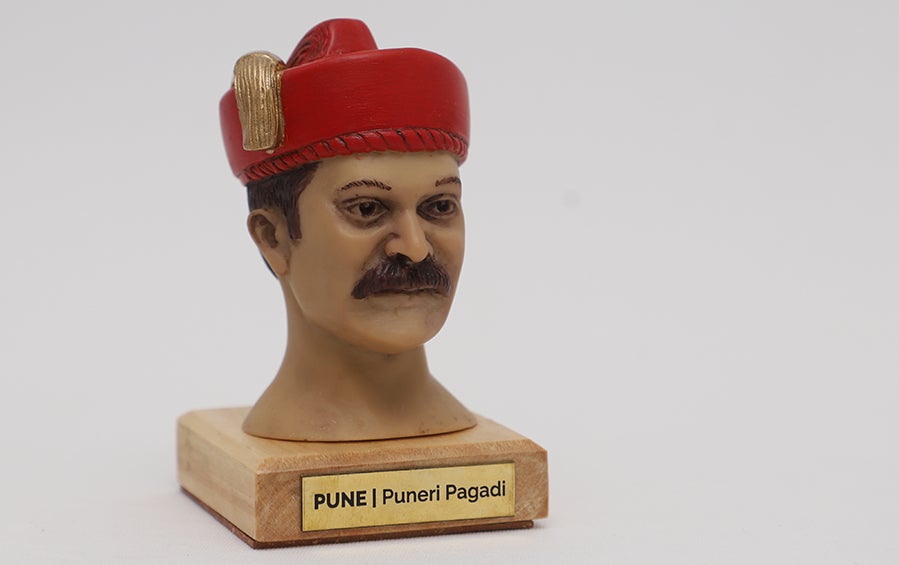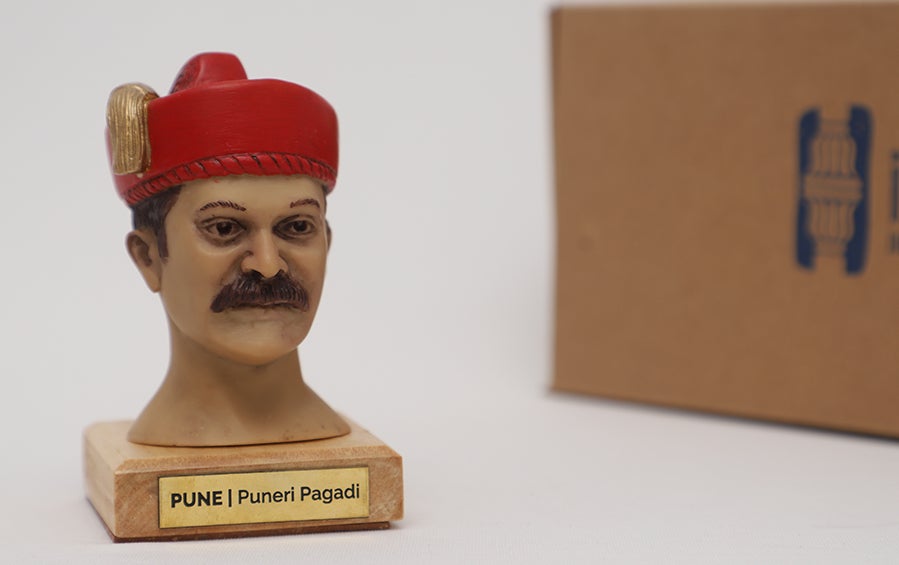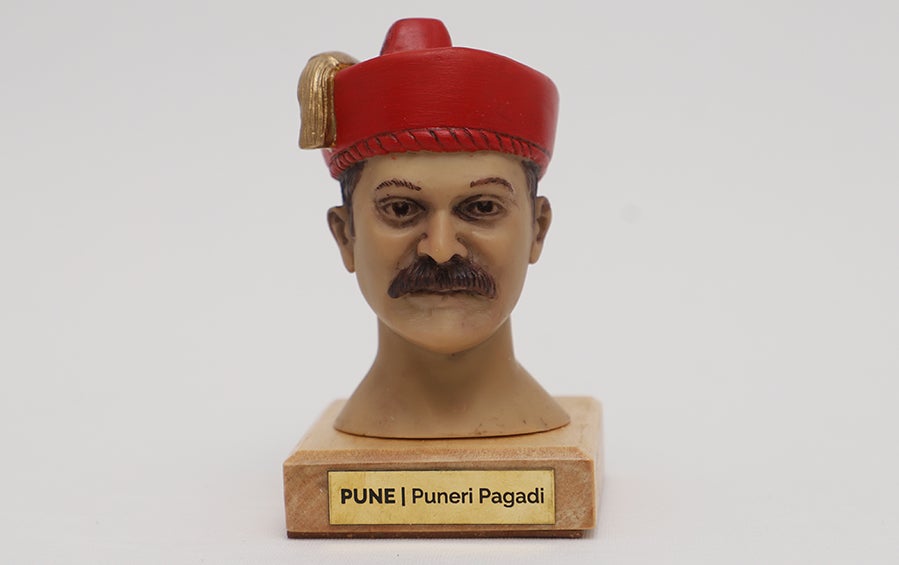Pune Traditional Headgear Model - Puneri Pagdi
In ancient India, Pagdis differed on the basis of one’s status. Bring the spirit of Pune City into your home with this Model of Traditional Headgear of Pune. The Puneri Pagdi model, made of resin, is elegantly mounted on a durable and solid base made of wood.
Size of Wooden Base: 70 x 70 x 16 mm
Size of Puneri Pagdi Model: 65 mm x 70 mm x 95 mm
Puneri/Peshwa Pagdi - The pagadi was introduced in the 19th century by Mahadev Govind Ranade, a social reformer. Later, it was worn by many leaders like Lokmanya Tilak. The Puneri Pagadi is a distinctive style of turban, which is considered as a symbol of pride and honor in the city of Pune.
The model is made of resin casting - a method of casting where a mold is filled with a liquid synthetic resin, which then hardens. In this process first a sculpture was made of clay, by sculptors from Pune and a flexible mold is made of wax. Then resin casting is accomplished with a resin plus a nearly equal amount of a "hardener" liquid (as in many epoxy resin or polyester resin systems). The mixture is poured into the wax mold. The resin mixture gets hardened after some time and then it is removed from the mold.
ABOUT PUNERI PAGDI
The Puneri Pagadi is a distinctive style of turban, which is considered as a symbol of pride and honor in the city of Pune. Though it is a symbol of honour, the use of the pagadi has changed over the years and now it is now used for gifting, in festivals and on traditional days in colleges. The Pagadi is Pune’s intellectual property and was given a GI (Geographical Indication) tag in September 2009.
The pagadi was introduced in the 19th century by Mahadev Govind Ranade, a social reformer. Later, it was worn by many leaders like Lokmanya Tilak, J.S. Karandikar, D.D. Sathye, Dr. Vitthalrao Gade, Tatysaheb Kelkar and Datto Vaman Potdar. The pagadi became more popular in 1973 after the Marathi play, Ghashiram Kotwal.







